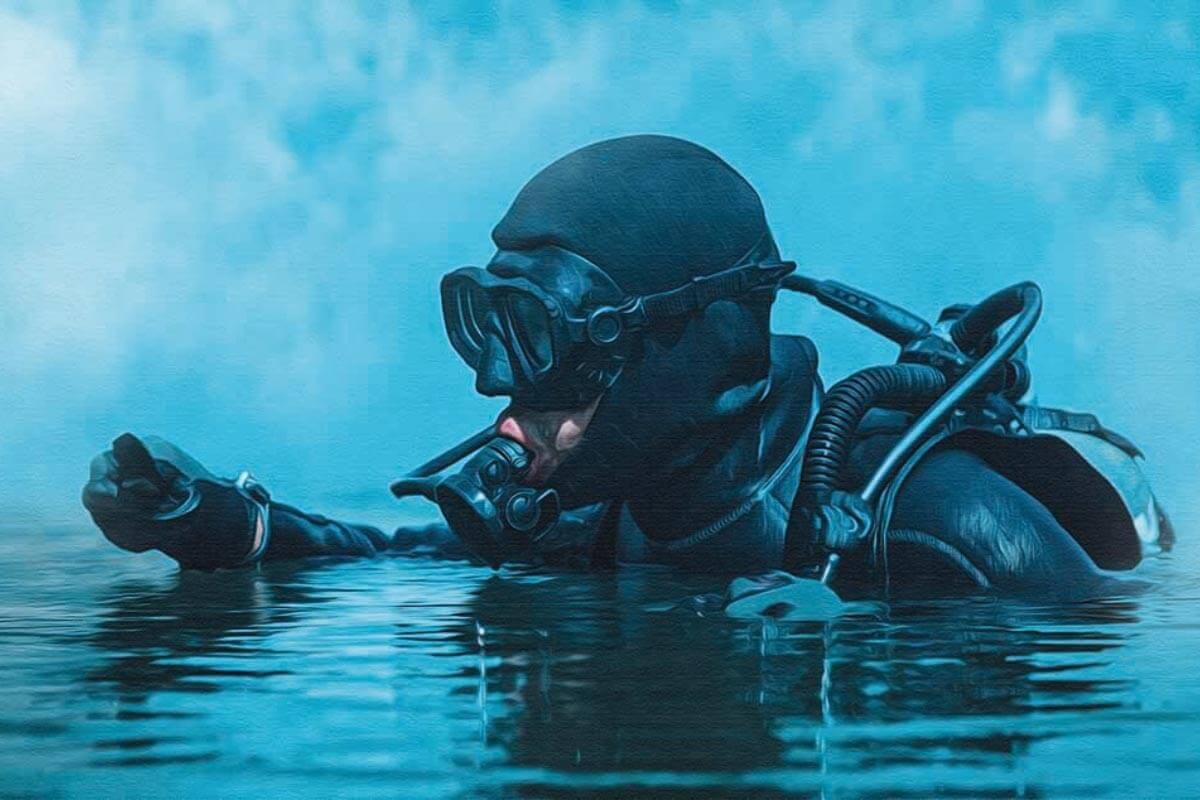
Walking through London recently, I saw a young woman, head buried in the screen of her phone, walk directly into a lamppost. ‘I’m sorry,’ she said when I asked if she was okay, ‘I wasn’t looking where I was going.’ I saw that Google Maps was open on her phone – so, in a way, she was looking exactly where she was going – she just had no idea where she was.
This translates directly into the use of compasses for underwater navigation. During my time as an instructor, I watched any number of students, fixated on their compass face, swim straight past – or directly into, on occasion – their intended target. While it is important that divers are able to use compasses correctly, it is often the case that too much emphasis is placed on their use, at the expense of other, equally valuable insights into underwater orientation.
It might sound obvious, but using a good map to get acquainted with the dive site beforehand, is immensely valuable to proper navigation. If the lady of the lamppost had orientated herself with a wider overview of the area before setting out on her journey, she would have been able to navigate the streets of London using the huge amount of information from the surrounding area, with the smartphone map a useful tool to confirm that the user is moving in the correct direction, rather than the sole source of information.
If the map had shown her that her intended destination, for example, had involved turning right after the supermarket but before reaching the park, she could then have dodged lampposts, pets and people until passing the supermarket, whereupon she could have stopped, referred to the map, reorientated herself and continued. If she’d found herself at the park gates, then she would know she’d gone too far and could refer to the app for a correction.
This is also translatable to diving, but with two significant differences. Divers frequently forget – or don’t know how – to use natural aids to navigation to orientate themselves, but also, more importantly, don’t take a map underwater with them.
More scuba diving skills articles
- Scuba diving skills – the importance of visualisation
- Getting comfortable with mask removal, replacement and clearing
- Scuba diving skills: how not to panic
- Speaking Up – voicing your predive worries
- Why refreshers are essential after a break from diving
If there is no dive site map, and you don’t know how to make one, then it’s probably best not to dive unsupervised without, at the very least, an orientation dive. Assuming that a good map exists, however, then copying it to a slate, or making detailed notes with as much directional information as possible, is essential. It should include depths, currents and fixed objects that might be encountered along the route.
A short example description might be: ‘Start at small coral block directly under entry point (5m deep); swim bearing 115° approx 20m across sand to large coral pinnacle, 12m deep (mooring halfway at 10m, seagrass at 15m); keep block with large salad coral on left shoulder; take bearing 180°, swim approx 10m to sunken speedboat at 15m’… and so on.
There is a lot of information in that brief description, of which the compass bearing is only a small part. Once I’ve set my bearing, I know I should arrive at the large coral pinnacle after no more than a few minutes; the mooring – if I see it – will be a good place to pause and check my compass, and the seagrass means I’ve gone too far. The direction in which the reef fish, soft coral, kelp or drifting sand is moving tells me I am swimming against a mild current, so if I find myself at 12m but I’m still over the sand, I can maintain that depth and swim into the current, following ripples along the sea bed if there are any, until I reach my intended target.
If I were to fixate on my compass bearing in the above example, then I might well end up too deep, with no frame of reference. This does not automatically mean the end of the dive, and, if the diver has enough information to hand, might be corrected. Getting lost, even on an easy dive site, however, becomes very uncomfortable, very quickly, and may lead to rash decisions. For example, making an unsafe ascent into boat traffic, which could have been avoided by divers taking into careful consideration where they are at any given point in the dive, rather than being fixated solely on the direction they’re travelling.
- British diver who died in Malta suffered pulmonary barotrauma – inquest - 6 January 2026
- World’s largest medieval cog discovered off Copenhagen - 6 January 2026
- Tragedy strikes as Australian diver dies off Tulamben, Bali - 31 December 2025


